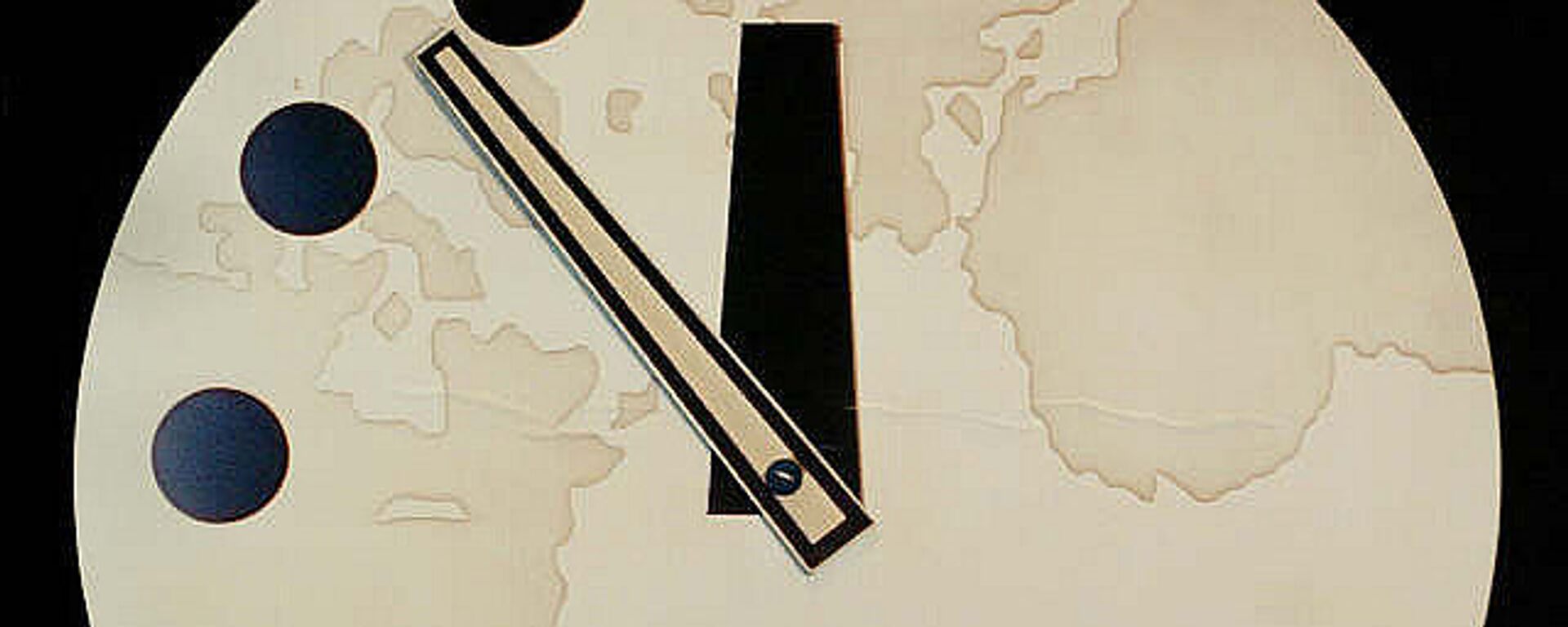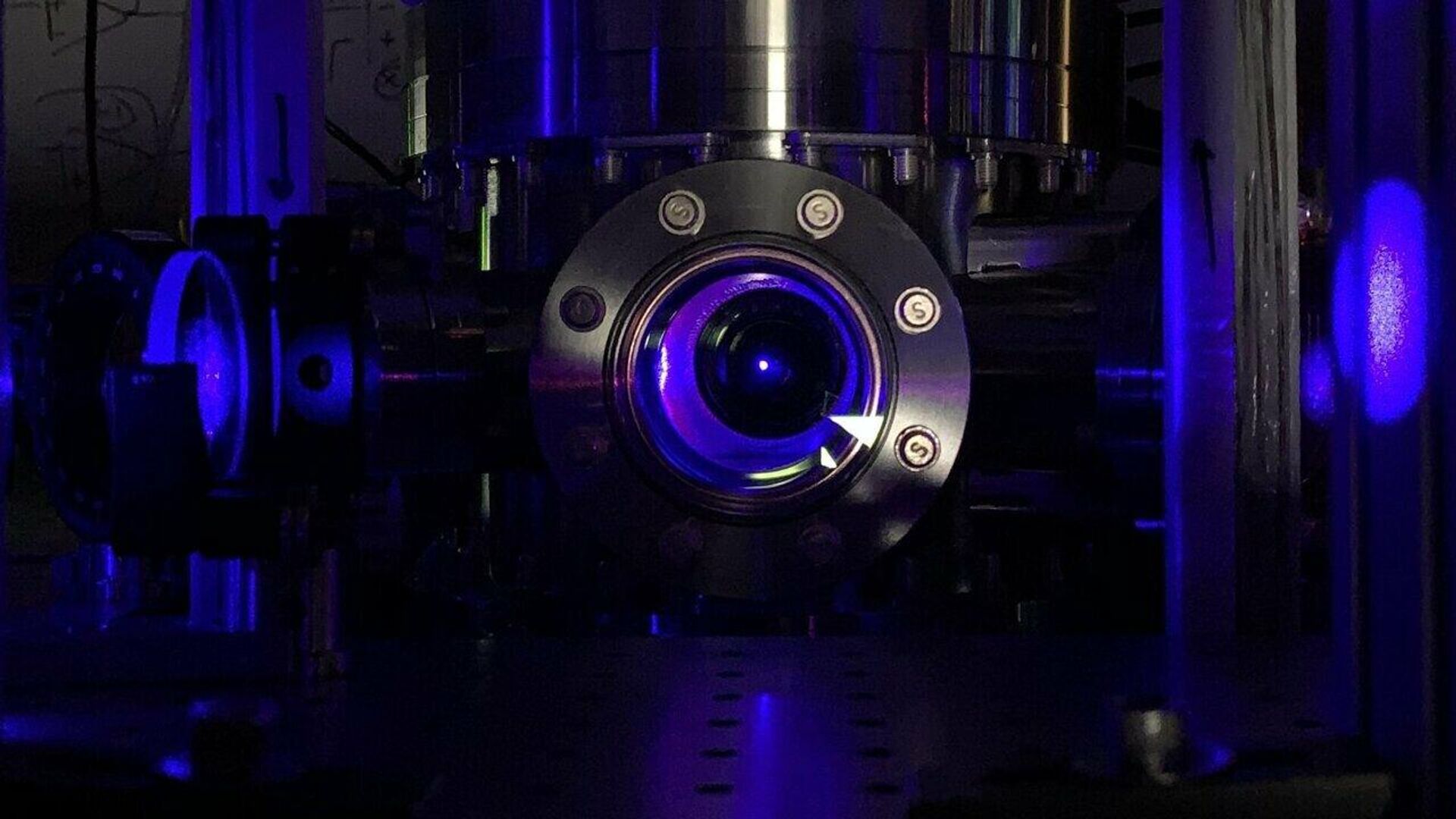https://sputnikglobe.com/20220217/new-atomic-clock-loses-just-one-second-every-300-billion-years-making-it-the-worlds-most-accurate-1093104980.html
New Atomic Clock Loses Just One Second Every 300 Billion Years, Making it the World's Most Accurate
New Atomic Clock Loses Just One Second Every 300 Billion Years, Making it the World's Most Accurate
Sputnik International
Atomic clocks, considered the world’s best time-keepers, rely on measuring the frequency of light absorbed or emitted by atoms. These clocks set standards for... 17.02.2022, Sputnik International
2022-02-17T11:23+0000
2022-02-17T11:23+0000
2022-08-06T13:32+0000
clock
time
physics
frequency
laser
science & tech
https://cdn1.img.sputnikglobe.com/img/07e6/02/11/1093108705_0:64:1280:784_1920x0_80_0_0_2c86b77fdcbbc4f48083af6921f710af.jpg
A new atomic clock developed by physicists from the University of Wisconsin-Madison is so accurate it will lose just a second in 300 billion years, according to a new study.The instrument, known as an optical lattice atomic clock, is the first example of a “multiplexed atomic clock”, six separate clocks co-existing in the same environment, a press release from the university explains.The ultra-precise clock allows scientists to measure gravitational waves and dark matter more accurately, according to the researchers.The results of the research were published on 16 February in the British scientific journal Nature.“We’re working both to improve their performance and to develop emerging applications that are enabled by this improved performance,” Kolkowitz added.The UW-Madison statement explains that the reason atomic clocks are “so precise” is because they exploit a “fundamental” property of atoms - that an electron absorbs or emits light when it changes its energy level. The frequency of the light emitted or absorbed is the same for all the atoms in a particular element.The "multiplexed clock" model created by the physicists allowed for separation of strontium atoms into several clocks which were arranged in a line in the same vacuum chamber.When the team shone their laser on just one clock in the chamber, they fund out that electrons were “excited” for just a 10th of a second. However, when they flashed their laser on two clocks at the same time, the excited electrons were detected to stay in the same state for as long as 26 seconds."Their results meant they could run meaningful experiments for much longer than their laser would allow in a normal optical clock," the statement said.Kolkowitz says that his team was able to achieve these results despite using a relatively “lousy” model of laser.The researchers then went about the task of detecting how accurately they could measure the differences between the two clocks, as two groups of atoms in varied environments are bound to tick at different rates because of factors such as gravity and magnetic fields.They ran the experiment more than 1,000 times over a span of three hours, to measure the differences in ticking frequency of the two clocks.The ticking frequencies of the two clocks were found to differ from one another, as had been anticipated. However, the researchers also found out that the difference means that the two clocks would differ by only one second in every 300 billion years.
https://sputnikglobe.com/20220121/doomsday-clock-remains-close-to-civilization-ending-apocalypse---atomic-scientists-1092413891.html
Sputnik International
feedback@sputniknews.com
+74956456601
MIA „Rossiya Segodnya“
2022
News
en_EN
Sputnik International
feedback@sputniknews.com
+74956456601
MIA „Rossiya Segodnya“
Sputnik International
feedback@sputniknews.com
+74956456601
MIA „Rossiya Segodnya“
clock, time, physics, frequency, laser, science & tech
clock, time, physics, frequency, laser, science & tech
New Atomic Clock Loses Just One Second Every 300 Billion Years, Making it the World's Most Accurate
11:23 GMT 17.02.2022 (Updated: 13:32 GMT 06.08.2022) Atomic clocks, considered the world’s best time-keepers, rely on measuring the frequency of light absorbed or emitted by atoms. These clocks set standards for Coordinated Universal Time, the global standard for regulating time. They also have myriads of applications in scientific research.
A new atomic clock developed by physicists from the University of Wisconsin-Madison is so accurate it will lose just a second in 300 billion years, according to a new study.
The instrument, known as an optical lattice atomic clock, is the first example of a “multiplexed atomic clock”, six separate clocks co-existing in the same environment, a
press release from the university explains.
The ultra-precise clock allows scientists to measure gravitational waves and dark matter more accurately, according to the researchers.
The results of the research were published on 16 February in the British scientific journal Nature.
“Optical-lattice clocks are already the best clocks in the world, and here we get this level of performance that no one has seen before,” remarked Shimon Kolkowitz, a UW-Madison professor and senior author of the study.
“We’re working both to improve their performance and to develop emerging applications that are enabled by this improved performance,” Kolkowitz added.

21 January 2022, 01:18 GMT
The UW-Madison statement explains that the reason
atomic clocks are “so precise” is because they exploit a “fundamental” property of atoms - that an electron absorbs or emits light when it changes its energy level. The frequency of the light emitted or absorbed is the same for all the atoms in a particular element.
“Optical atomic clocks keep time by using a laser that is tuned to match this frequency precisely, and they require some of the world’s most sophisticated lasers to keep accurate time,” the statement added.
The "multiplexed clock" model created by the physicists allowed for separation of strontium atoms into several clocks which were arranged in a line in the same vacuum chamber.
When the team shone their laser on just one clock in the chamber, they fund out that electrons were “excited” for just a 10th of a second. However, when they flashed their laser on two clocks at the same time, the excited electrons were detected to stay in the same state for as long as 26 seconds.
"Their results meant they could run meaningful experiments for much longer than their laser would allow in a normal optical clock," the statement said.
Kolkowitz says that his team was able to achieve these results despite using a relatively “lousy” model of laser.
"Normally, our laser would limit the performance of these clocks. But because the clocks are in the same environment, and experience the exact same laser light, the effect of the laser drops out completely,” the UW-Madison physicist underlines.
The researchers then went about the task of detecting how accurately they
could measure the differences between the two clocks, as two groups of atoms in varied environments are bound to tick at different rates because of factors such as gravity and magnetic fields.
They ran the experiment more than 1,000 times over a span of three hours, to measure the differences in ticking frequency of the two clocks.
The ticking frequencies of the two clocks were found to differ from one another, as had been anticipated. However, the researchers also found out that the difference means that the two clocks would differ by only one second in every 300 billion years.
It is “a measurement of precision timekeeping that sets a world record for two spatially separated clocks," the statement added.


